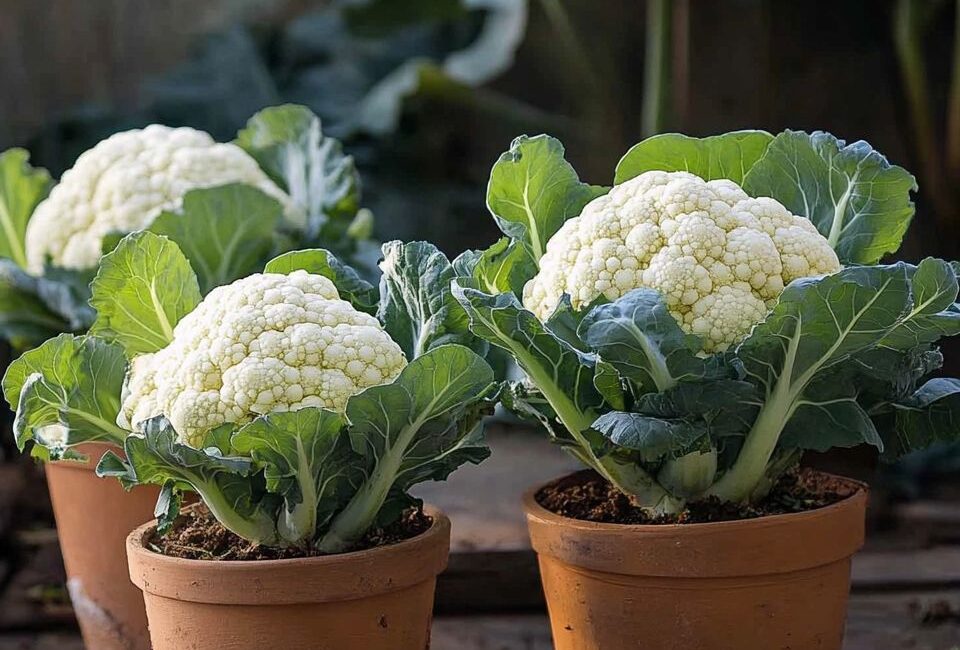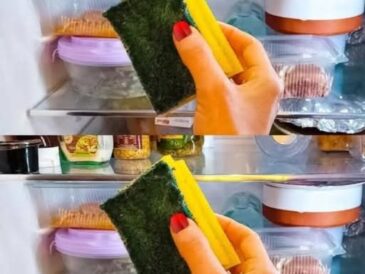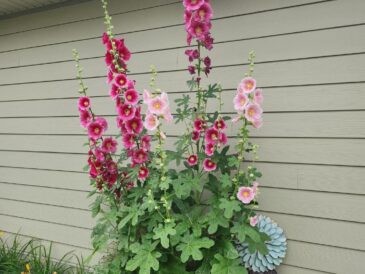Growing cauliflower in a pot is an excellent solution for gardeners with limited space. Not only is cauliflower a nutritious vegetable, but it can also produce large, impressive heads when cultivated correctly. If you’re looking to grow the biggest cauliflower possible in a pot, you’ve come to the right place. This detailed guide will take you through each step to successfully grow cauliflower in a pot and achieve the best results.
Whether you’re an experienced gardener or a beginner, this guide will provide you with all the necessary information to grow a cauliflower that is not only large but also healthy and delicious. From choosing the ideal variety to creating the perfect growing conditions, you’ll find everything you need to grow cauliflower in containers, whether in your garden, on your terrace, or balcony.
Table of Contents
- Introduction to Growing Cauliflower in Pots
- Choosing the Right Variety of Cauliflower
- Selecting the Ideal Pot for Growing Cauliflower
- Preparing the Soil for Your Cauliflower Plants
- Planting Cauliflower in Pots: Step-by-Step
- Caring for Your Cauliflower Plants
- Watering Cauliflower in Pots
- Fertilizing Cauliflower for Maximum Growth
- Light Requirements for Growing Cauliflower
- Managing Pests and Diseases
- How to Encourage the Formation of Bigger Cauliflower Heads
- Harvesting Cauliflower
- Solving Common Cauliflower Problems
- Conclusion: Tips for Growing a Giant Cauliflower
1. Introduction to Growing Cauliflower in Pots
Cauliflower is a member of the Brassicaceae family, closely related to broccoli, cabbage, and kale. It grows well in cool, temperate climates and can be successfully cultivated in containers under the right conditions. Growing cauliflower in a pot allows you to have better control over the soil, temperature, and space, which is ideal for small garden spaces, patios, or balconies.
Cauliflower plants can grow quite large if they receive the proper care. When grown in pots, they offer several benefits, including control over soil conditions and space. By following a few key steps, you can grow large and healthy cauliflower heads while enjoying the advantages of container gardening.
2. Choosing the Right Variety of Cauliflower
Before you start, it’s essential to choose a variety of cauliflower that will thrive in pots and produce large heads. Not all cauliflower varieties are equal when it comes to size, growth habit, and suitability for container gardening. Here are a few varieties to consider:
a. Traditional White Cauliflower
This is the most common variety, known for its dense, creamy heads. It’s an excellent choice for pot cultivation, provided it’s grown under good conditions. Varieties such as ‘Snowball’ or ‘Cheddar’ produce compact and large heads.
b. Purple and Orange Cauliflower
Purple and orange cauliflower varieties, like ‘Graffiti’ and ‘Orange Sunshine,’ are not only visually striking but also more nutrient-rich than white varieties. They grow similarly to white cauliflower and can also thrive in pots.
c. Romanesco Cauliflower
Romanesco cauliflower, with its bright green color and fractal-shaped florets, is a wonderful alternative to traditional cauliflower. Although it has a longer growing season, it’s also suited for container gardening and can produce large heads.
When choosing a variety, consider your growing zone, climate, and available space. Most cauliflower varieties require a long growing season and prefer cool temperatures, so choose varieties that are well-suited to your region’s climatic conditions.
3. Selecting the Ideal Pot for Growing Cauliflower
Choosing the right pot is one of the most important factors for growing large cauliflower heads. Cauliflower roots are deep and require substantial space to grow. Here’s what to look for when selecting your pot:
a. Pot Size
Choose a pot that’s at least 30-45 cm deep and has a diameter of at least 45 cm. The pot must be large enough to accommodate the root system as the plant grows. Cauliflower plants need plenty of space to grow correctly. If you’re planting multiple cauliflower in a single pot, make sure there’s enough space for each plant.
b. Material
Pots come in several materials: plastic, ceramic, and terracotta. Plastic pots are lightweight, affordable, and retain moisture well. Terracotta pots are more aesthetically pleasing but dry out faster, requiring more frequent watering. Regardless of the material, make sure the pot has sufficient drainage holes to prevent water accumulation that could lead to root rot.
c. Mobility
Since cauliflower plants can get quite large, you may need to move the pot to maximize sunlight exposure or protect the plants from extreme weather. Choose a pot with casters or place it on a mobile tray to make moving the pot easier.
4. Preparing the Soil for Your Cauliflower Plants
Cauliflower prefers rich, well-drained soil. Since the plant’s roots need sufficient access to nutrients, a high-quality mix is crucial. Here’s how to prepare the soil:
a. Use Quality Potting Mix
Choose a potting mix designed for vegetables that is light, airy, and drains well. Avoid using garden soil in pots, as it can become too compact and hinder root growth.
b. Add Organic Matter
Enhance the soil with compost or well-rotted manure. These will provide essential nutrients for the cauliflower and improve soil texture.
c. pH Level
Cauliflower prefers slightly acidic to neutral soil, with a pH between 6.0 and 7.0. Test the pH of your soil and adjust it if necessary with lime (to raise pH) or sulfur (to lower pH).
5. Planting Cauliflower in Pots: Step-by-Step
Once your pot and soil are ready, it’s time to plant. Here are the steps to follow:
a. Starting from Seeds or Transplants
You can start your cauliflower from seeds or buy young seedlings from a nursery. If starting from seeds, plant them indoors about 4 to 6 weeks before the last expected frost date. Since cauliflower has a long growing season, it’s best to start early for good results. If using young plants, you can plant them directly in pots once the weather warms up.
b. Planting Depth
Plant the young seedlings or transplants deep enough to cover the roots and the base of the stems. The plant’s collar should be slightly above the soil surface. This encourages a stronger root system while reducing the risk of disease.
c. Spacing
If planting multiple cauliflowers in the same pot, space them about 30-45 cm apart. Crowding the plants too much can restrict airflow and hinder optimal growth.
6. Caring for Your Cauliflower Plants
Click page 2 to continue




